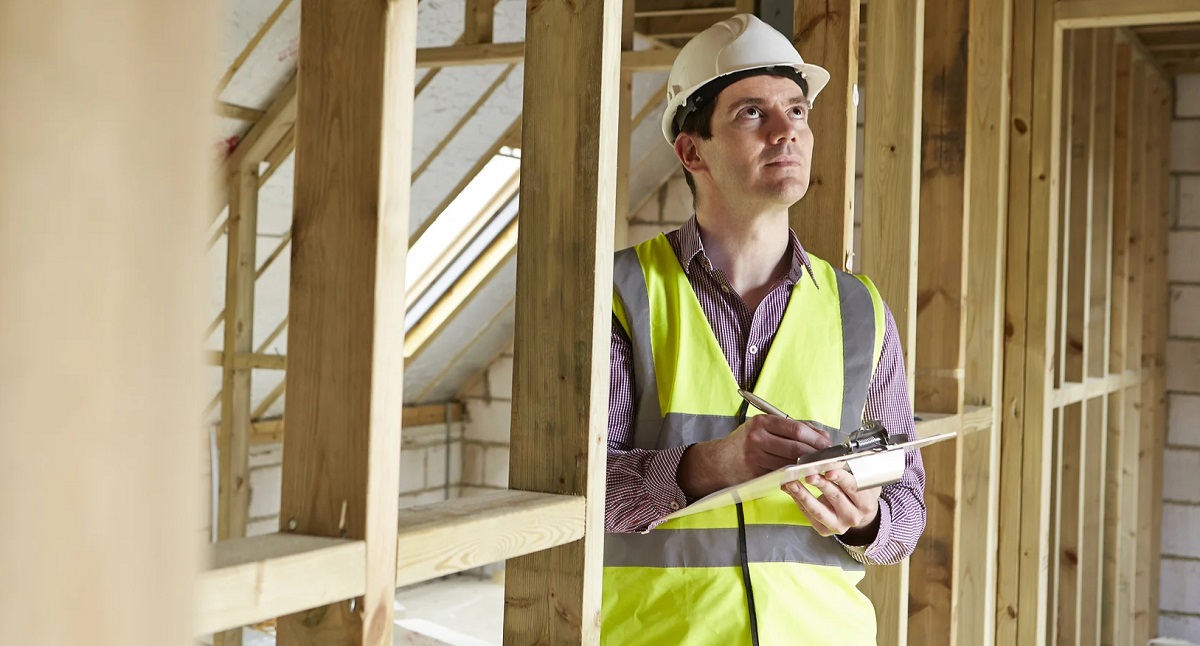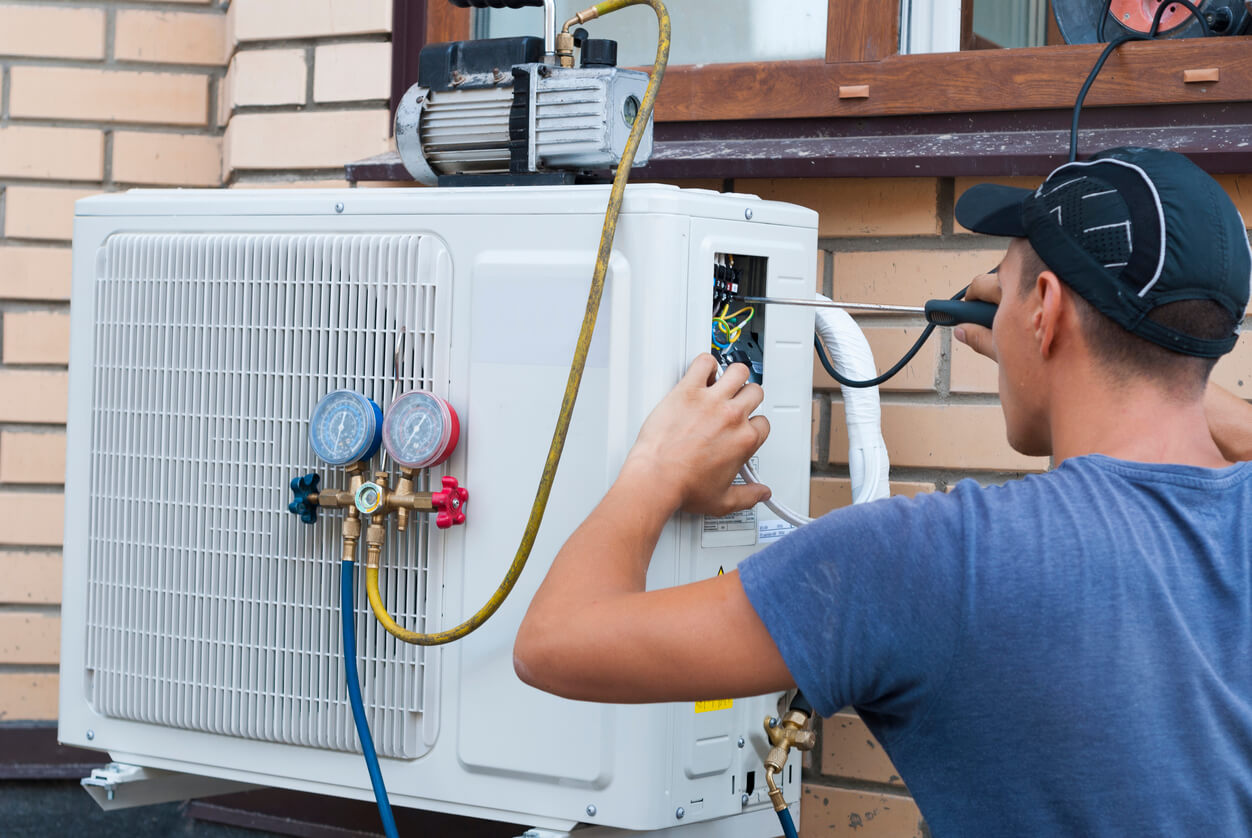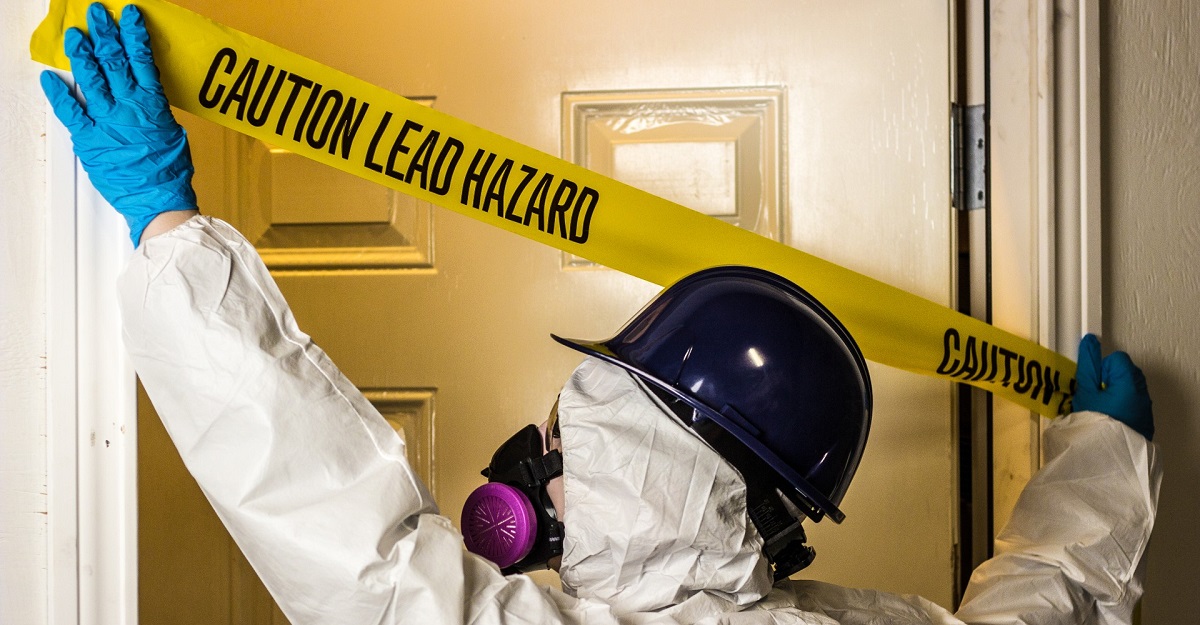Home>Home Maintenance>How Many Items Are Included In The Buyer’s Inspection Notice Response?


Home Maintenance
How Many Items Are Included In The Buyer’s Inspection Notice Response?
Modified: March 6, 2024
Find out how many items are included in the buyer's inspection notice response. Ensure your home maintenance is in check with this essential information.
(Many of the links in this article redirect to a specific reviewed product. Your purchase of these products through affiliate links helps to generate commission for Storables.com, at no extra cost. Learn more)
Introduction
Welcome to our comprehensive guide on the essential items to include in a buyer’s inspection notice response. If you’re in the process of buying a new home, or have recently gone through the inspection stage, you’re likely familiar with the important step of addressing any issues identified during the inspection process.
The buyer’s inspection notice is a crucial part of the home-buying process, where the buyer presents a list of requested repairs and/or credits to the seller. The inspection notice gives the buyer an opportunity to address any necessary repairs or negotiate for a reduction in price based on the condition of the property.
In this article, we will explore the key elements that should be included in a comprehensive response to the buyer’s inspection notice. By providing a thorough and well-prepared response, you can effectively manage the negotiations and ensure a smoother transaction process.
Let’s dive in and learn more about the buyer’s inspection notice and how to craft a response that meets everyone’s needs.
Key Takeaways:
- Address each item in the buyer’s inspection notice response thoroughly to build trust, facilitate negotiations, and ensure a successful home purchase. This helps maintain a positive buyer-seller relationship and improves the chances of sale completion.
- When responding to the buyer’s inspection notice, consider structural, mechanical, safety, and environmental issues, among others. Providing clear, detailed solutions for each item fosters effective negotiations and increases the likelihood of a smooth home purchase.
Read more: When Buying A House, Who Is Responsible For Repairs From The Home Inspection: Buyer Or Seller?
Overview of the Buyer’s Inspection Notice
The buyer’s inspection notice is a formal document submitted by the buyer to the seller after the home inspection has been conducted. It outlines any concerns, repairs, or credits the buyer is requesting based on the findings of the inspection report. The purpose of the notice is to address any issues that may impact the safety, functionality, or value of the property.
Typically, the inspection notice will include a list of specific items that require attention. These items can range from minor cosmetic fixes to major structural repairs. It’s important to note that the buyer’s inspection notice is not intended to cover general maintenance or normal wear and tear on the property. Instead, it focuses on any defects or deficiencies that could affect the buyer’s decision to proceed with the purchase.
Once the buyer’s inspection notice is submitted, the seller has a period of time, as specified in the purchase agreement, to respond. The seller has three options when responding to the inspection notice:
- Agree to the requested repairs or credits.
- Propose alternative repairs or credits.
- Decline to make any repairs or offer credits.
The response from the seller is usually followed by negotiations between the buyer and seller to come to a mutually agreeable resolution. This process may involve further inspections, estimates from contractors, or discussions on the financial implications of the requested repairs.
It’s important for both buyers and sellers to approach the inspection notice process with an open mind and a willingness to collaborate. By working together, they can reach a resolution that satisfies both parties and ensures a successful real estate transaction.
Understanding the Response Process
The response process to the buyer’s inspection notice is a critical stage in the home purchase transaction. It sets the tone for the negotiations and can determine whether the deal proceeds or falls through. To navigate this process effectively, it’s important to have a clear understanding of how it works.
When the buyer’s inspection notice is received, the seller has a specific timeframe, typically outlined in the purchase agreement, to provide a response. This timeframe is crucial as it sets the stage for further negotiations and ensures that the transaction progresses in a timely manner.
Upon receiving the notice, the seller should thoroughly review the requested repairs or credits and consider the potential impact on the sale. It’s essential to approach the response process in a professional and cooperative manner to maintain a positive relationship between the buyer and seller.
When responding to the buyer’s inspection notice, the seller has several options:
- Agree to the requested repairs or credits: If the seller agrees with the items listed in the inspection notice, they can accept responsibility for completing the repairs or offering the requested credits. This shows good faith and can facilitate a smoother negotiation process.
- Propose alternative repairs or credits: In some cases, the seller may propose alternative solutions to address the concerns raised in the inspection notice. This can include offering a credit towards the purchase price or suggesting a different approach to address the issues.
- Decline to make any repairs or offer credits: The seller also has the right to decline any requested repairs or credits. However, it’s important to carefully consider the potential consequences of this decision, as it may lead to the buyer walking away from the deal.
Once the seller’s response is conveyed to the buyer, further negotiation and communication may be necessary to reach a mutually acceptable agreement. This can involve additional inspections, obtaining quotes from contractors, or exploring alternative solutions that satisfy both parties.
Effective communication, flexibility, and a willingness to find common ground are essential during the response process. It’s crucial for both the buyer and seller to remember that the ultimate goal is to reach an agreement that satisfies everyone involved and ensures a successful home purchase.
When responding to a buyer’s inspection notice, be sure to include a detailed list of all the items that are being addressed. This will help ensure that all concerns are properly documented and addressed.
Importance of Providing a Comprehensive Response
When it comes to the buyer’s inspection notice response, providing a comprehensive and thoughtful response is of utmost importance. A well-crafted response can significantly impact the outcome of the negotiations and greatly influence the success of the real estate transaction. Here’s why it’s crucial to provide a thorough response:
- Builds trust and goodwill: A comprehensive response demonstrates to the buyer that you take their concerns seriously. It shows that you are committed to addressing any issues that have been raised and are invested in ensuring a fair and transparent transaction. This helps build trust and goodwill between the parties involved.
- Facilitates effective negotiations: A detailed response provides a clear starting point for negotiations. By clearly outlining your position on the requested repairs or credits, you can open up a dialogue to find common ground and explore alternative solutions. This can lead to more efficient and effective negotiations.
- Ensures successful resolution of issues: Addressing all the items listed in the buyer’s inspection notice helps ensure that all necessary repairs are taken care of. This not only ensures the safety and functionality of the property but also reduces the risk of future disputes or issues arising after the purchase is complete. By providing a comprehensive response, you can mitigate potential risks and facilitate a successful resolution of any problems.
- Maintains positive buyer-seller relationship: Real estate transactions involve a significant amount of communication and cooperation between the buyer and the seller. Providing a comprehensive response signals a willingness to work collaboratively, which can have a positive impact on the relationship between the parties. A positive buyer-seller relationship can help smooth out the transaction process and ensure a more positive experience for everyone involved.
- Improves chances of sale completion: A comprehensive response that adequately addresses the buyer’s concerns increases the likelihood that the buyer will proceed with the purchase. By showing your commitment to addressing their needs, you enhance the buyer’s confidence in the property and improve the chances of successfully closing the sale.
Overall, providing a comprehensive response to the buyer’s inspection notice is essential for a successful real estate transaction. It sets the stage for negotiations, builds trust between the parties, and ensures that all necessary repairs and credits are addressed. By taking the time to thoughtfully respond to the inspection notice, you can increase the likelihood of a smooth and successful home purchase.
List of Items Included in the Buyer’s Inspection Notice Response
When crafting a response to the buyer’s inspection notice, it’s important to address each item in a clear and comprehensive manner. While the specific items will vary based on the inspection report and the buyer’s concerns, here is a list of common items that may be included in the response:
- Structural Issues: Address any structural concerns raised during the inspection, such as foundation cracks, roof issues, or sagging floors. Include details on the proposed repairs or credits to resolve these issues and ensure the structural integrity of the property.
- Mechanical Systems: Evaluate the functionality of HVAC systems, plumbing, electrical, and other mechanical components. Outline any necessary repairs or upgrades, along with associated costs or credits.
- Water and Moisture Issues: Address any issues related to leaks, water damage, or moisture intrusion. This may include repairs to plumbing, waterproofing, or mitigating moisture-related concerns.
- Exterior and Landscaping: Assess the condition of the exterior of the property, including siding, paint, fences, and landscaping. Specify any necessary repairs or credits to address aesthetic or functional issues.
- Interior Elements: Consider the condition of the interior, such as flooring, walls, ceilings, doors, and windows. Identify any repairs or upgrades needed to ensure a safe and comfortable living environment.
- Appliances and Fixtures: Evaluate the functionality of appliances and fixtures included in the sale, such as kitchen appliances, bathroom fixtures, and lighting. Determine if any repairs or replacements are necessary.
- Safety Hazards: Identify any safety hazards flagged during the inspection, such as faulty wiring, mold, asbestos, or lead-based paint. Outline the steps needed to mitigate these hazards and ensure a safe living environment for the buyer.
- Permit and Code Compliance: Ensure that all work completed on the property meets local building codes and has the necessary permits. If any issues are identified, address them in the response and provide a plan for rectification.
- Environmental Concerns: If any environmental issues are discovered during the inspection, such as radon or mold, propose solutions to address these concerns and ensure a healthy living environment.
- Other Miscellaneous Items: Include any additional items or concerns raised in the inspection report that may require attention. This could range from minor cosmetic fixes to maintenance tasks or other specific buyer requests.
It’s important to provide a detailed and clear response for each item, including the proposed solutions, associated costs, and any alternative suggestions. This level of transparency and specificity helps facilitate productive negotiations and ensures that all parties are on the same page.
Conclusion
The buyer’s inspection notice response is a critical step in the home-buying process. By providing a comprehensive and well-crafted response, you can effectively address any concerns raised by the buyer and facilitate a successful resolution to the inspection findings. This not only ensures a smoother transaction but also helps maintain a positive buyer-seller relationship.
Throughout this article, we have discussed the importance of understanding the buyer’s inspection notice and the response process. We’ve highlighted the need for a comprehensive response that addresses each item thoroughly, from structural issues to safety hazards and everything in between.
By taking the time to understand and respond to the buyer’s concerns, you demonstrate your commitment to resolving any issues and ensuring the buyer’s satisfaction. This level of attentiveness can significantly impact their decision to proceed with the purchase and ultimately contribute to a successful closing.
Remember, effective communication, flexibility, and a willingness to find common ground are key during the response process. It’s crucial to approach negotiations with an open mind and a cooperative attitude to reach a mutually agreeable resolution.
In conclusion, by providing a comprehensive response to the buyer’s inspection notice, you are not only fulfilling your obligations as a seller but also creating an environment conducive to a successful real estate transaction. So, take the time to address each item in detail, propose appropriate solutions, and work towards a resolution that satisfies both parties. With a comprehensive response, you can move forward confidently and close the deal on your new home.
Frequently Asked Questions about How Many Items Are Included In The Buyer's Inspection Notice Response?
Was this page helpful?
At Storables.com, we guarantee accurate and reliable information. Our content, validated by Expert Board Contributors, is crafted following stringent Editorial Policies. We're committed to providing you with well-researched, expert-backed insights for all your informational needs.















0 thoughts on “How Many Items Are Included In The Buyer’s Inspection Notice Response?”